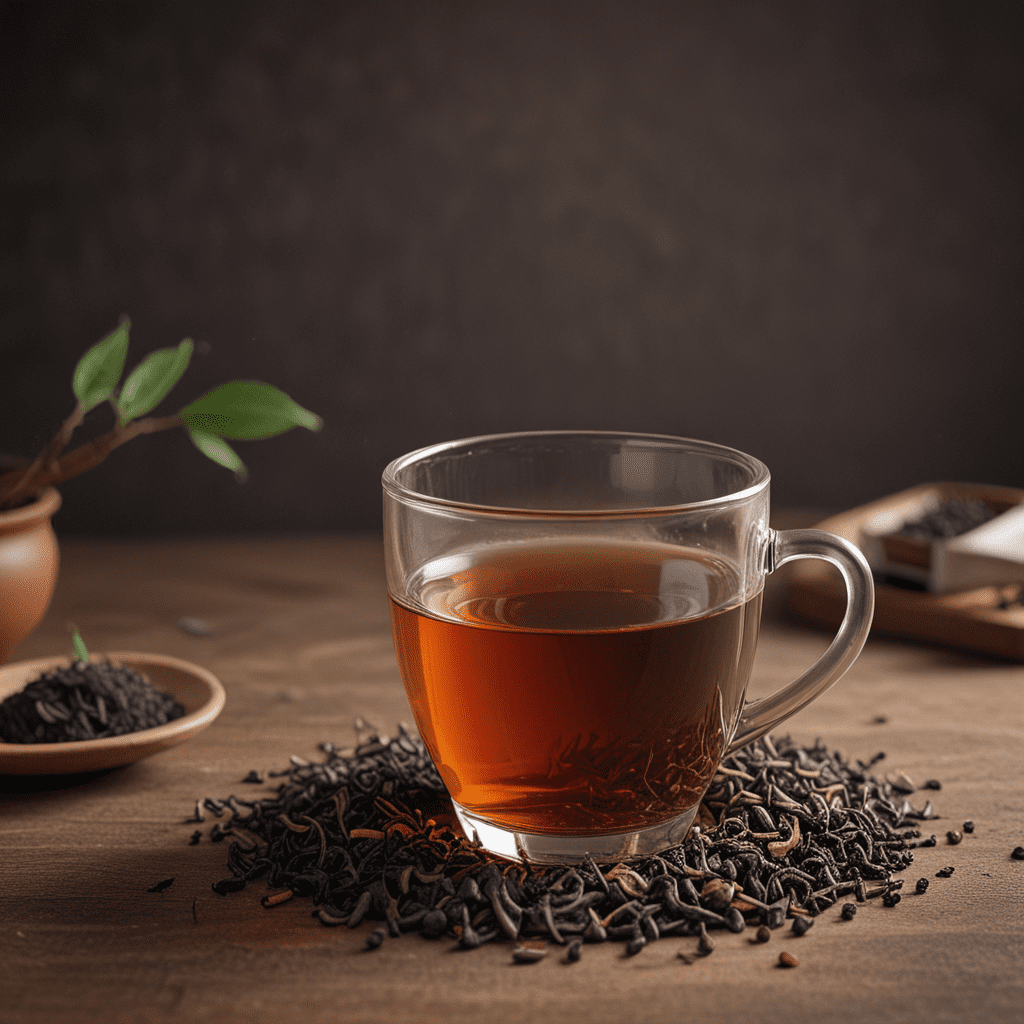Assam Tea: An Introduction to Tea Tasting
History and Origins of Assam Tea
Assam tea, a cornerstone of the Indian tea industry, boasts a rich history dating back to the 19th century. In the early 1820s, the British East India Company embarked on an ambitious mission to find a suitable tea-growing region within its Indian territories. After extensive exploration, they stumbled upon the lush Brahmaputra Valley in Assam. The region's favorable climate, ample rainfall, and fertile soil proved ideal for tea cultivation, and by 1852, the first tea plantations were established.
Cultivation and Harvesting of Assam Tea
Assam tea is grown in the Brahmaputra Valley and the surrounding foothills of the Himalayas. The region's specific microclimate and soil composition contribute to the unique characteristics of Assam tea. The plants thrive in the humid, tropical conditions, with temperatures ranging from 20 to 30 degrees Celsius throughout the year. Harvesting typically occurs from May to November, with the first flush, plucked in May and June, considered the finest quality.
Types and Grades of Assam Tea
Assam tea is classified into two main types: CTC (Crush, Tear, Curl) and orthodox. CTC tea is processed using machines, resulting in a smaller, more uniform leaf size. Orthodox tea, on the other hand, is processed by hand and produces larger, whole leaves. Within these two categories, there are various grades of Assam tea, with the highest grades characterized by larger leaves, better color, and superior flavor.
Sensory Characteristics of Assam Tea
Assam tea is renowned for its bold, malty flavor and rich aroma. The tea's full-bodied character and robust tannins make it an excellent choice for blending with other teas or for drinking with milk. Assam tea is often described as having notes of malt, wood, honey, and spice, with a distinct briskness that lingers on the palate.
Essential Equipment for Tea Tasting
Tea tasting requires minimal equipment, allowing enthusiasts to immerse themselves in the experience with ease. Essential tools include:
- Teacups: White or transparent teacups enable clear observation of the tea's color and clarity.
- Kettle: A variable temperature kettle allows precise control over the water temperature, which plays a crucial role in extracting the optimal flavors and aromas.
- Teapot: A porcelain or glass teapot facilitates proper brewing and observation of the tea leaves.
- Infuser: An infuser basket allows the tea leaves to steep freely, preventing over-extraction and bitterness.
Preparation of Assam Tea for Tasting
Before embarking on the tasting experience, proper preparation of the Assam tea is paramount:
- Water Temperature: Assam tea requires boiling water, typically between 195-205°F (90-96°C).
- Quantity: Use approximately 2-3 grams of loose tea leaves for every 6-8 ounces of water.
- Steeping Time: Assam tea benefits from a longer steeping time of 3-5 minutes.
- Infusion: Allow the tea leaves to infuse freely in the teapot or infuser for the desired amount of time.
- Decanting: Once the steeping process is complete, decant the tea into a clean teacup to prevent any further extraction.
Steps in Tea Tasting
Tea tasting involves a methodical approach to fully appreciate the sensory characteristics of Assam tea:
- Appearance: Observe the color, clarity, and aroma of the tea.
- Aroma: Swirl the tea gently and inhale the aroma to identify the dominant notes and aromas.
- Taste: Take a small sip and allow the tea to fully coat your palate, focusing on the flavors and mouthfeel.
- Evaluate: Identify the specific flavors, aromas, and textures present in the tea.
- Aftertaste: Pay attention to the lingering flavors and sensations after swallowing the tea.
Assessing Aroma and Appearance
The aroma and appearance of Assam tea offer valuable insights into its quality and characteristics. A freshly brewed cup of Assam tea should exhibit a deep, golden-brown color with good clarity. The tea should release a malty, woodsy aroma with hints of honey and spice.
Evaluating Flavor and Taste
The flavor of Assam tea is a complex symphony of bold, malty notes, brisk tannins, and subtle sweetness. The tea's full-bodied character lingers on the palate, leaving a satisfying aftertaste. Assam tea offers a unique balance between astringency and sweetness, making it a versatile choice for blending or enjoying on its own.
Pairing Assam Tea with Food and Occasions
Assam tea's bold flavor makes it a versatile accompaniment to a wide range of culinary experiences. Its malty character complements savory dishes such as hearty stews, grilled meats, and spicy curries. Assam tea also pairs well with sweet treats like cakes, biscuits, and pastries. Due to its invigorating properties, Assam tea is an excellent choice for breakfast or an afternoon pick-me-up.
Frequently Asked Questions (FAQs)
What is the best way to store Assam tea?
Assam tea should be stored in an airtight container in a cool, dry place away from direct sunlight.How long can Assam tea be steeped?
Assam tea can be steeped for 3-5 minutes, depending on the desired strength and flavor intensity.Can Assam tea be re-steeped?
Yes, Assam tea can be re-steeped multiple times, although the flavor and aroma will become less pronounced with each subsequent infusion.

